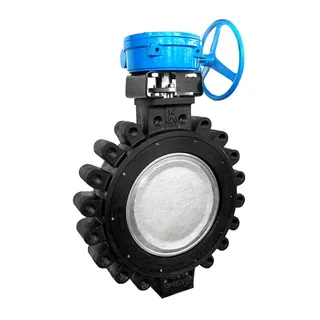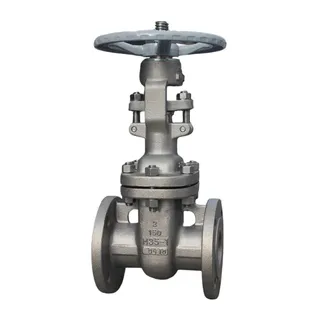In modern industrial production, valve electric actuators act as the "intelligent brain" of valves, precisely controlling valve opening and closing to achieve accurate fluid control. Facing a wide variety of electric actuators on the market, selecting a suitable model has become a challenge for many engineers and procurement personnel. Today, we present a comprehensive and practical selection guide to valve electric actuators.
Before selecting an actuator, it is essential to know the basic types of valve electric actuators. Based on the driving method and output motion, the common types include:
This type of actuator is the most commonly used. It drives gears or worm gears through an electric motor, ultimately moving the valve stem nut to operate the valve. It is suitable for valves that require multiple turns to fully open or close, such as gate valves and globe valves. Its advantages include compact structure, high reliability, and the ability to quickly drive large valves. It usually comes with limit switches and torque sensing devices that automatically cut off the motor power when the valve reaches the end of its stroke or exceeds safe torque to prevent damage. Additionally, it includes a manual handwheel mechanism, allowing manual operation in the event of a power failure.
However, it also has a drawback: during a power failure, the valve can only remain in its current position and cannot achieve a fail-safe position (fail-open or fail-close) unless a backup power system is used. Therefore, when selecting a multi-turn electric actuator, it is necessary to consider whether a backup power system is required based on actual operating conditions.
Quarter-turn electric actuators are mainly used for valves that require 90-degree rotation, such as ball valves, butterfly valves, and plug valves. Compared with multi-turn actuators, they have a more compact structure and usually provide lower output torque, but it is sufficient to drive small-sized valves. New-generation quarter-turn actuators integrate complex functions similar to multi-turn actuators, including non-intrusive, user-friendly interfaces for easy parameter setting and diagnostics. Since they require less power, they can also be battery-operated to achieve fail-safe operation, which is useful in scenarios with high safety requirements.
Linear electric actuators are mainly used for valves requiring linear motion, such as control valves and diaphragm valves. They drive the valve stem through a screw or hydraulic cylinder to achieve linear motion, controlling valve opening and closing. The advantage of this actuator is precise position control, suitable for applications requiring fine adjustments. It is usually equipped with a position feedback device that relays the actual valve position back to the control system for closed-loop control.
After understanding the basic types of valve electric actuators, the key factors to consider when selecting are:
Valve type is the foundation for selection. Different valves require different types of electric actuators. For example, gate valves and globe valves typically require multi-turn electric actuators because they need multiple rotations to fully open or close. Ball valves, butterfly valves, and plug valves require quarter-turn actuators because 90-degree rotation is sufficient. It is also necessary to consider the valve's operational requirements, such as whether fast switching or precise adjustment is needed. For fast switching, select actuators with quick response; for precise control, choose actuators with accurate position control.
Output torque is one of the core parameters of an electric actuator and determines whether it can drive the valve properly. Selection should be based on the valve's actual operating torque. If the output torque is too low, the valve may not open or close properly; if too high, it increases cost and may damage the valve. Generally, the actuator's output torque should be slightly higher than the valve's operating torque to provide sufficient margin for friction and resistance.
For multi-turn valves, consider the number of turns of the valve stem nut to correctly adjust the gear ratio and ensure precision. Valve stem height and diameter are also important; the stem diameter must be smaller than the actuator's allowable value to ensure proper matching between valve and actuator.
Driving energy is the actuator's power source, commonly electricity or fluid power. Electrically driven actuators have simple structures and fast response, suitable for most applications. For large valves, three-phase power is usually selected due to higher output power; for small valves, single-phase power is sufficient. DC power with battery backup can be used for fail-safe operation.
Fluid-powered actuators, such as pneumatic or hydraulic, have different characteristics. Pneumatic actuators respond quickly and are simple, suitable for fast switching; hydraulic actuators provide high torque and smooth operation, suitable for large-diameter, high-pressure valves. When selecting fluid-powered actuators, consider the type and pressure of the medium and the actuator size.
Operation speed and frequency are important selection factors. Valves requiring fast switching need actuators with high speed, while frequently operated valves, such as those controlling level, flow, or pressure, require actuators capable of high-frequency operation. Some actuators allow speed adjustment through motor speed control or special algorithms, but selection should match actual requirements.
In automated systems, actuators receive control signals to operate valves and provide position feedback for closed-loop control. Common signals include 4-20mA analog, discrete (on/off), and digital communication. 4-20mA analog signals indicate valve position through current variation, suitable for analog control. Discrete signals are simple on/off signals for switching operations. Digital communication offers fast transmission and strong anti-interference, suitable for complex systems.
Select actuators based on control system type and required feedback, ensuring accurate valve position reporting. Advanced actuators may support multiple protocols for easy integration with different control systems.
The operating environment affects actuator performance and lifespan. Consider temperature, humidity, dust, and corrosive gases. High-temperature environments require heat-resistant actuators; humid or dusty environments require higher protection to prevent ingress.
Protection levels, such as IP54, IP65, and IP67, indicate dust and water resistance. IP54 protects against dust and splashing water, suitable for general industrial environments; IP65 protects against dust and water jets, suitable for harsher conditions; IP67 protects against dust and temporary immersion, suitable for underwater or highly humid environments. Select protection based on actual conditions to ensure stable operation.
Safety is paramount in industrial production. Actuators directly affect process safety. In hazardous environments, automated actuators reduce personnel risk and prevent accidents. Select actuators with safety features such as overload protection, short-circuit protection, and fault alarms. Reliability is also critical. Choose reputable brands with tested quality and consider maintenance and repair costs. Selecting easily maintainable actuators reduces operational costs.
Determine Valve Type and Operation Requirements: First, identify valve type and operational needs to select the correct actuator type. Gate or globe valves use multi-turn actuators; ball, butterfly, or plug valves use quarter-turn actuators. Consider whether fast switching or precise adjustment is required.
Calculate Valve Operating Torque: Operating torque is a fundamental parameter. For 90° valves like ball or butterfly valves, refer to manufacturer data for torque under rated pressure. For multi-turn valves, calculate torque based on stem diameter, thread size, and operating pressure.
Select Suitable Output Torque and Thrust: Choose an actuator with output torque slightly higher than the valve's operating torque to ensure sufficient margin. Also, ensure the actuator's maximum thrust does not exceed allowable limits.
Determine Driving Energy and Power Requirements: Select the power source according to valve size and operational needs. Large valves usually use three-phase power; small valves may use single-phase. For fail-safe operation, DC power with battery backup can be used. Consider fluid-powered actuators for special conditions.
Consider Operation Speed and Frequency: Select an actuator with speed and frequency matching the valve's operational requirements. For frequent operation, ensure actuator can handle high-frequency movement and adjustable stroke time if needed.
Select Control Signal and Feedback Type: Choose control signal type according to system requirements: 4-20mA analog, discrete, or digital communication. Ensure feedback accuracy and compatibility with the control system.
Evaluate Environmental Conditions and Protection Level: Assess operating environment and select actuators with appropriate protection levels and environmental resistance.
Consider Safety and Reliability: Choose actuators with safety features and high reliability. Prefer reputable brands and consider ease of maintenance to reduce operational costs.
Use Selection Tools and Data Sheets: After determining parameters, use manufacturer selection tools or data sheets containing detailed specifications and performance curves to select the most suitable model. Adjust based on actual conditions to ensure the selected actuator meets operational requirements.
Selecting a valve electric actuator is a complex and detailed process requiring consideration of valve type, operational needs, output torque, driving energy, speed, control signals, environmental conditions, safety, and reliability. This guide provides in-depth insight into actuator selection. In practice, use manufacturer tools and data sheets and adjust according to specific applications to ensure the selected model meets requirements, improves production efficiency, and ensures safety. For any difficulties, consult professional engineers or manufacturer technical support for expert advice.



